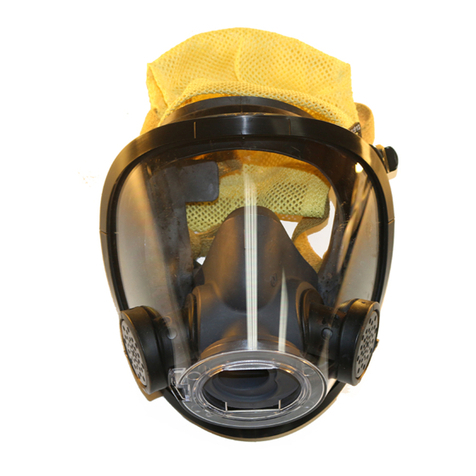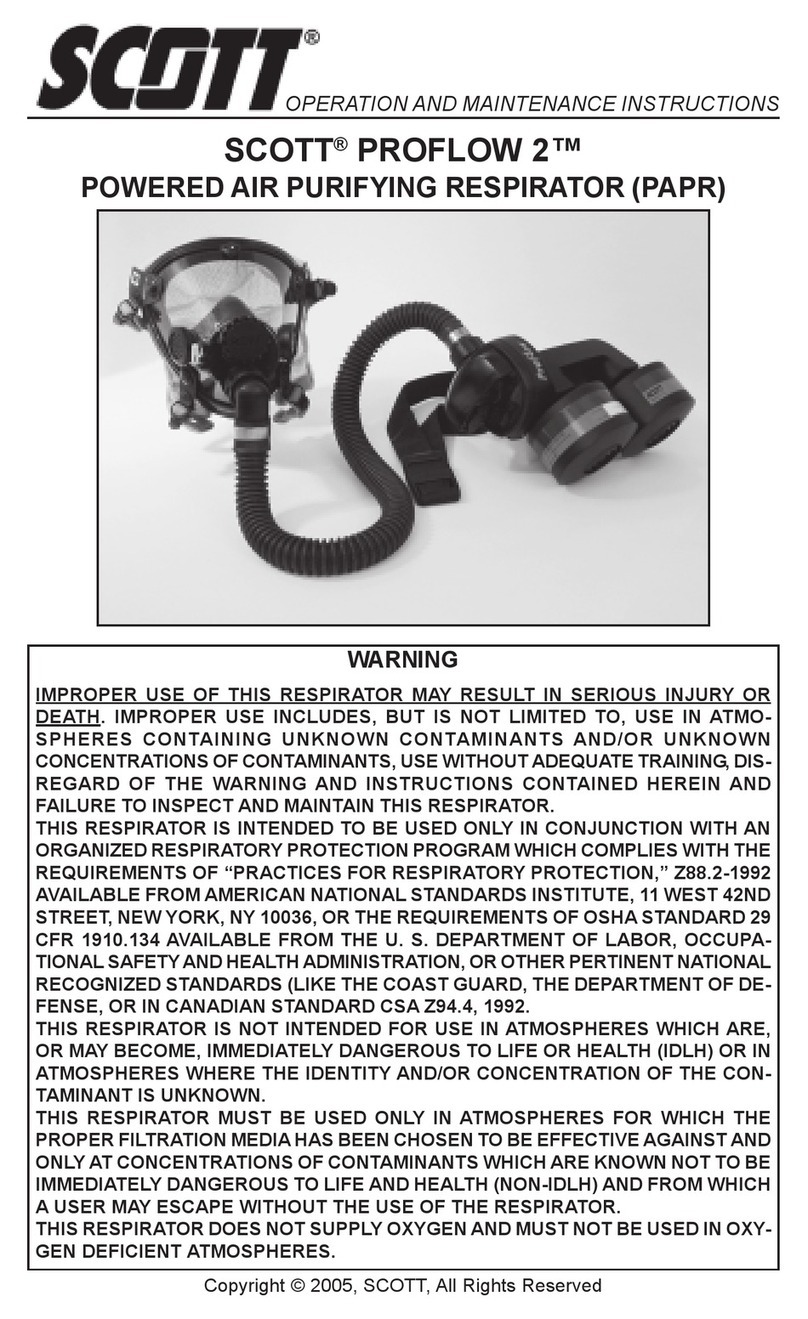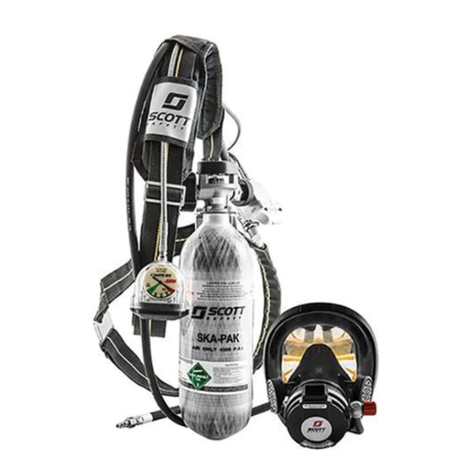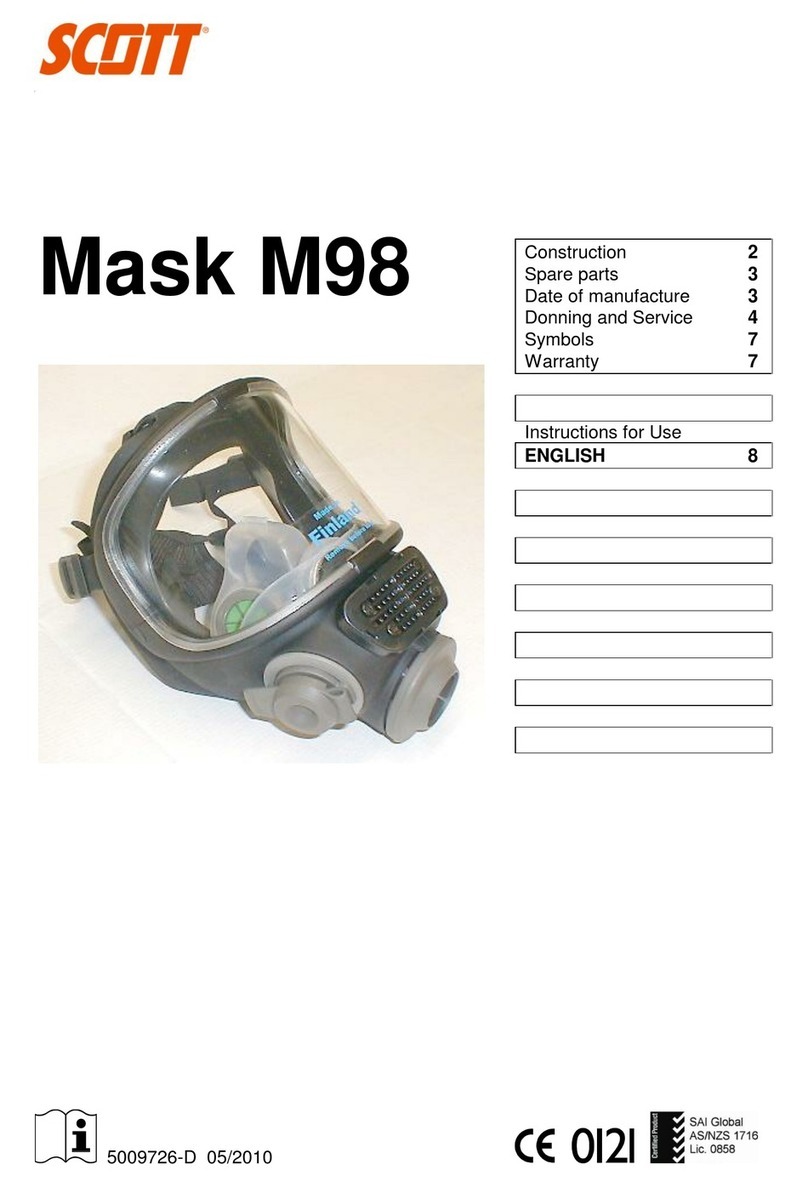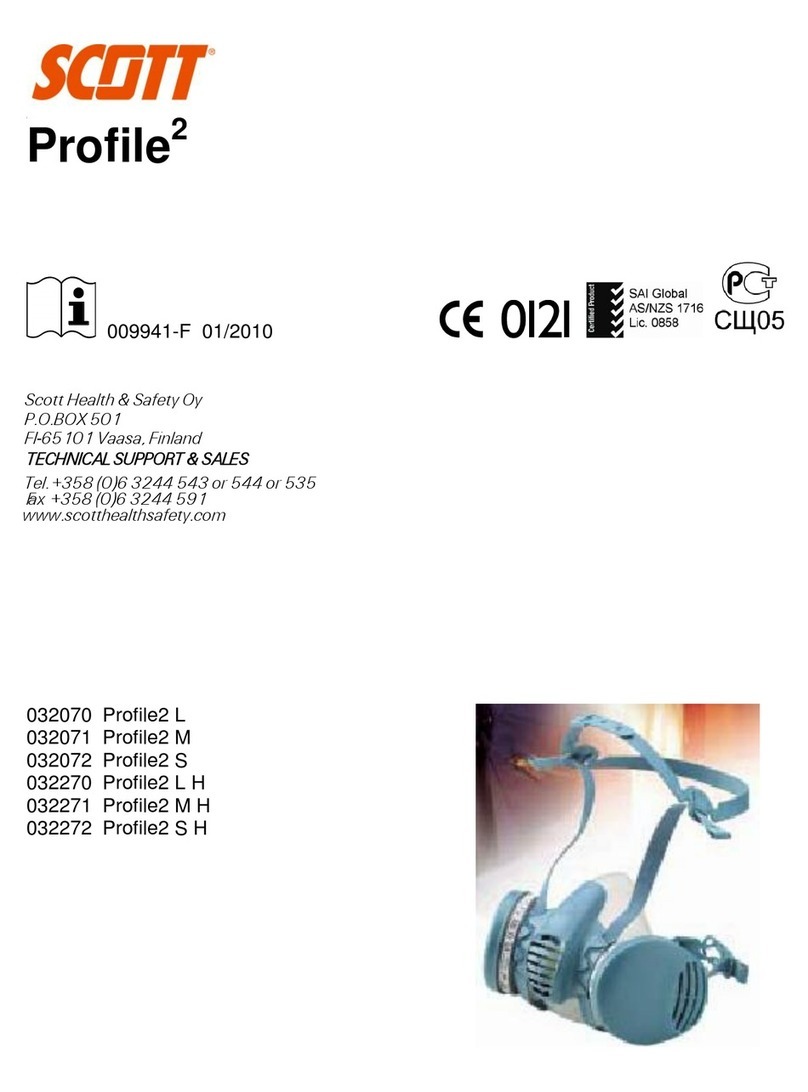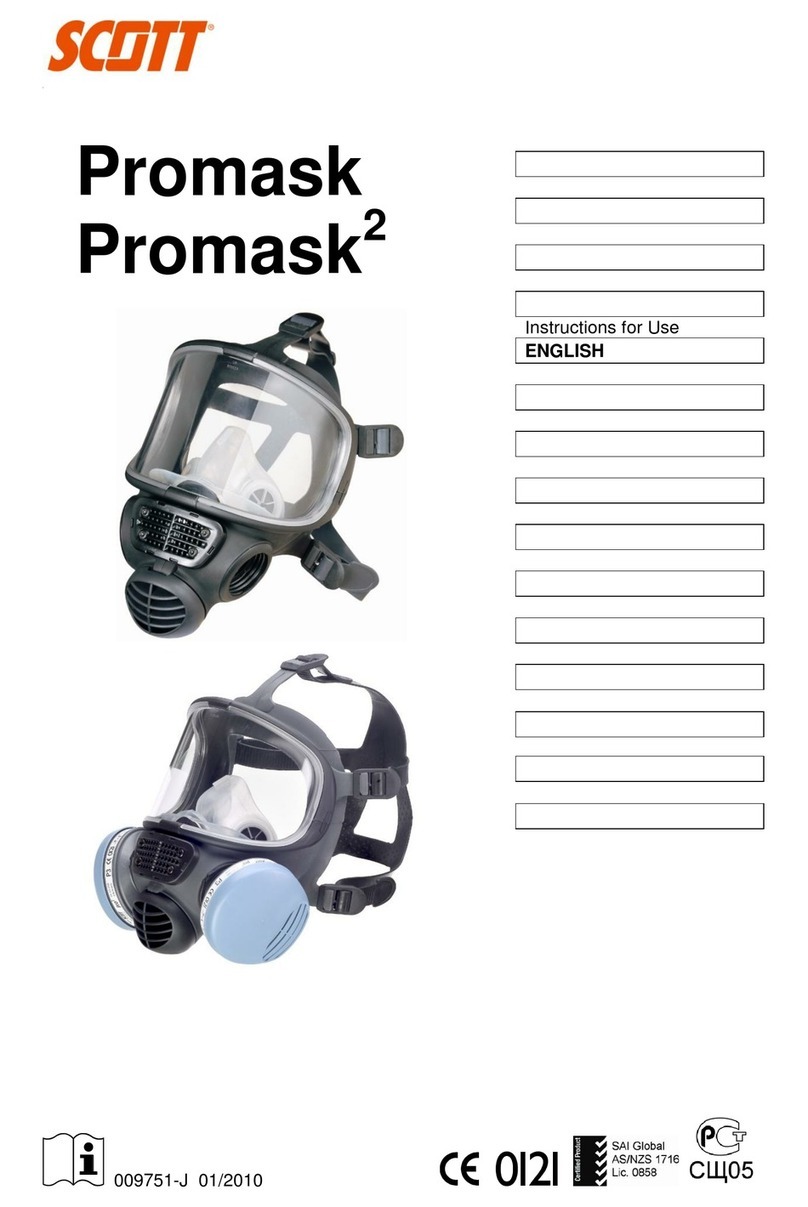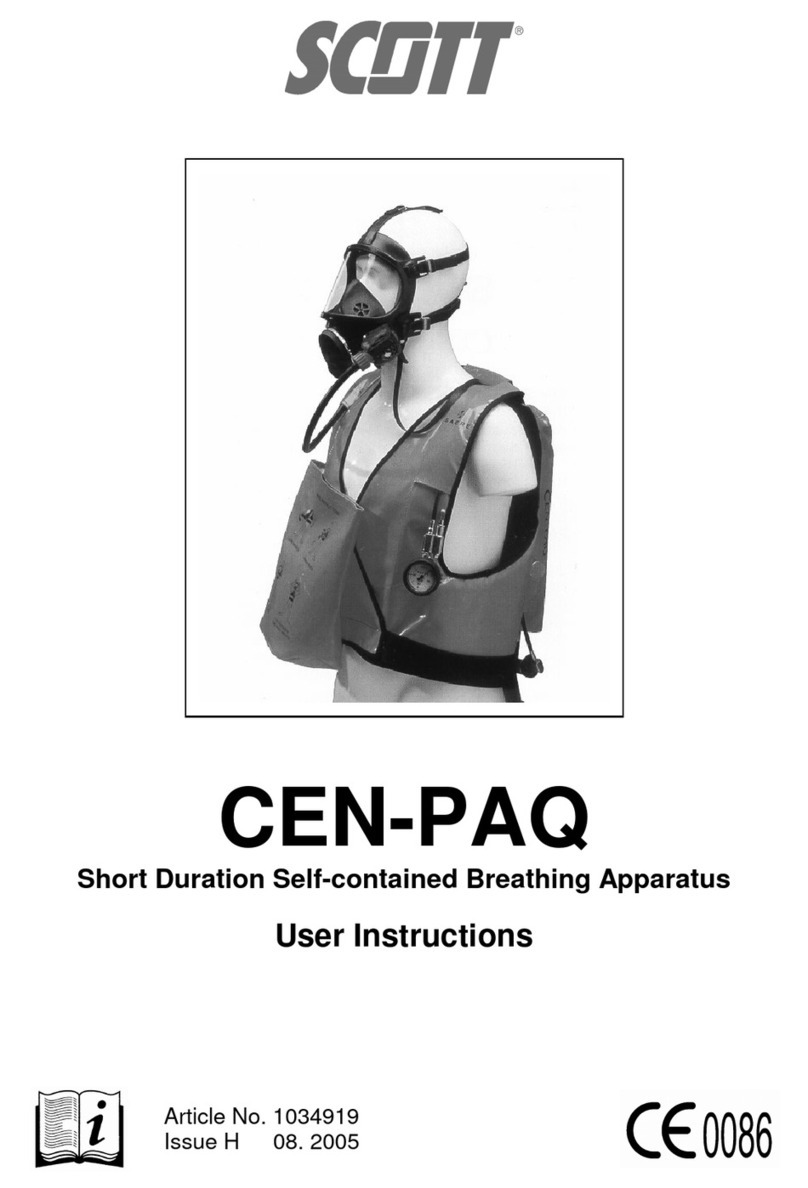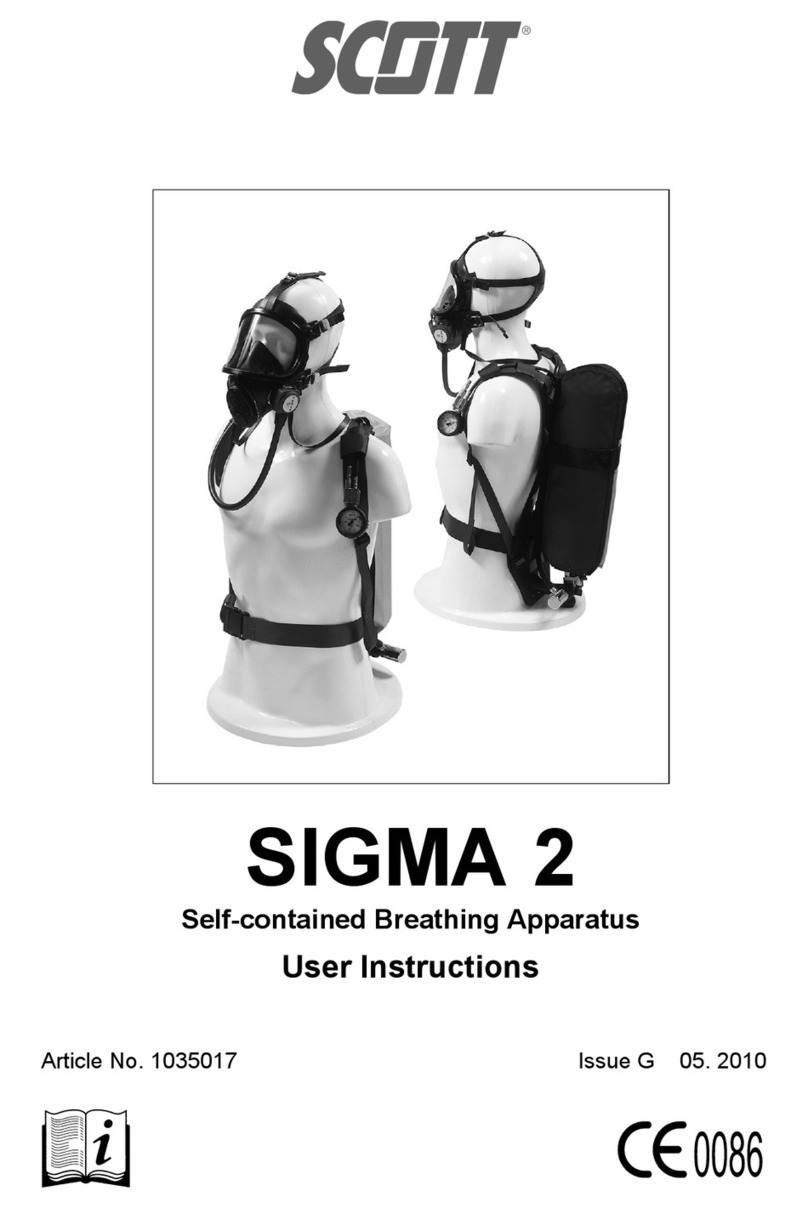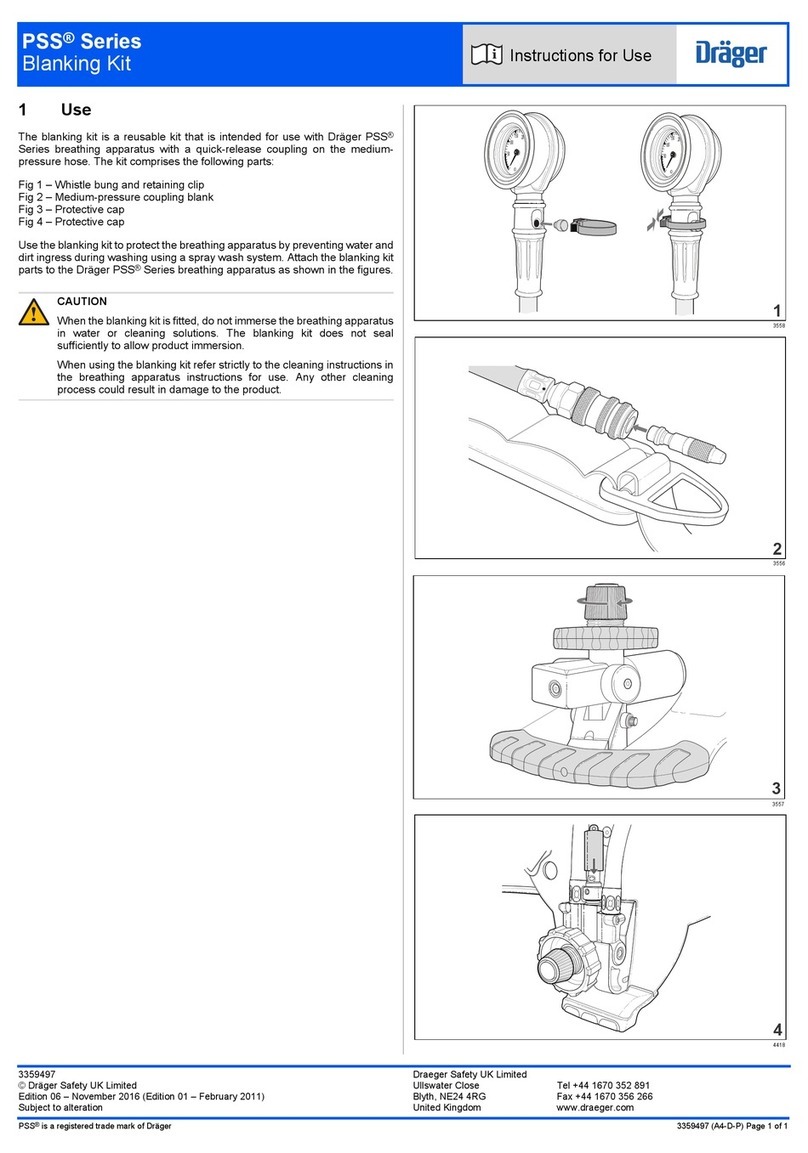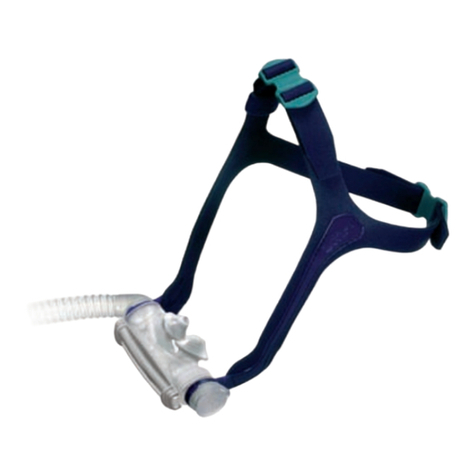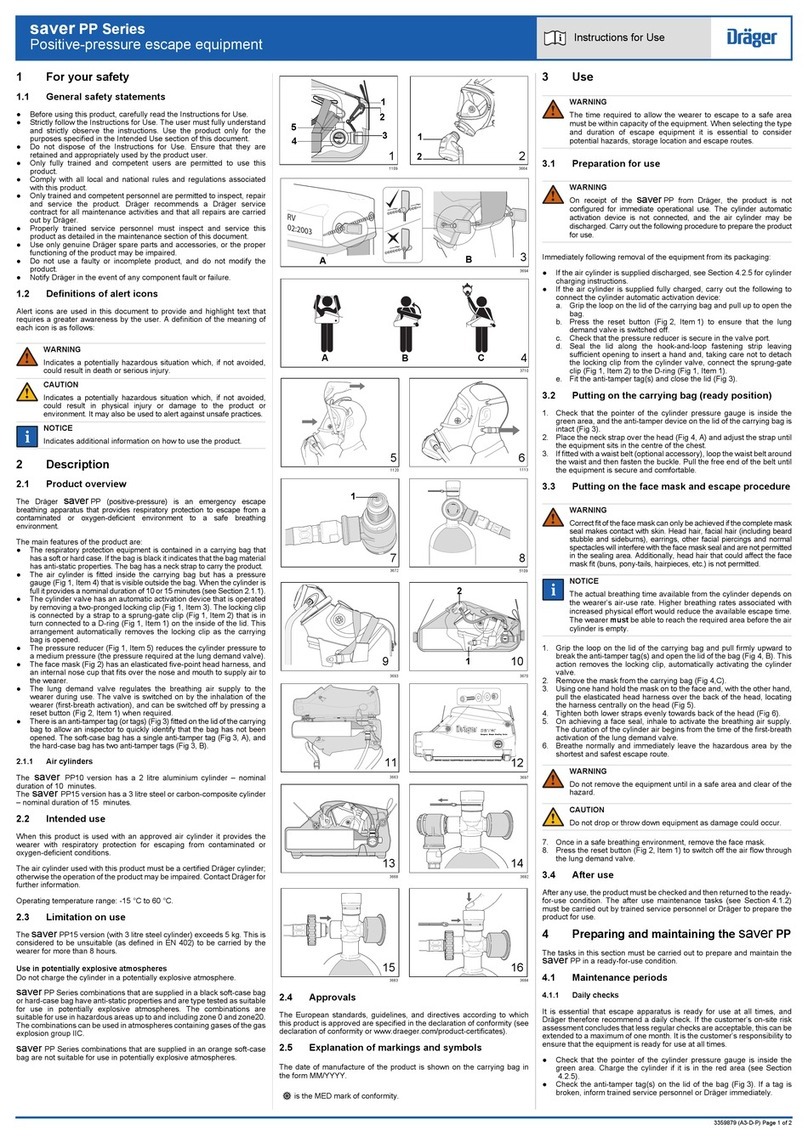
S – SPECIFIC USE LIMITATIONS
The following general limitations are IN ADDITION TO AND DO NOT REPLACE
THE SPECIFIC LIMITATIONS ON EACH RESPIRATOR.
1. User MUST be instructed and trained in the proper use of this respirator and
recognize its limitations.
2. Do not use this equipment while under the influence of drugs, alcohol, or any
medications or substances which may affect vision, dexterity, or judgment or
when fatigue prevents safe operation.
3. Thisrespirator is intended for entryinto, or work in, onlythose atmospheres which
are not oxygen deficient and are not immediately dangerous to life and health.
Thisrespiratormay be used forESCAPE ONLY fromatmosphereswhichbecome
immediatelydangerous to life andhealth.DO NOT USE IN OXYGEN DEFICIENT
ATMOSPHERES. Filtration elements do not supply oxygen. DO NOT use this
respirator to enter or work in atmospheres containing unknown amounts of con-
taminants. When the concentration of the hazardous material in the atmosphere
is not known, the atmosphere must be treated as immediately dangerous to life
and health.
4. Use of this respirator in environments containing substances which may irritate
or poison through the skin may require the use of additional protective equip-
ment or clothing to protect the body.
5. The protection offered by this respirator depends upon the quality of the face-
piece fit, the condition of the respirator and the selection of the proper filtration
element.
6. This respirator user MUST be properly fitted with the respirator before use (see
FACEPIECE FITTING section of this manual).
7. The respirator MUST NOT be worn when conditions prevent a good face to
facepiece seal . Such conditions include but are not limited to growth of beard or
sideburns, a skull cap that projects under the facepiece, temple pieces on cor-
rective glasses, or anything else which interferes with the face to facepiece seal.
8. MAKE CERTAIN THAT THE FILTRATION ELEMENT SELECTED IS THE COR-
RECT ONE REQUIRED FOR THE HAZARD. Filtration element selected for
protection against airborne particulates, gases and vapors must be used in ac-
cordance with instructions and warnings shown on filtration element labels. Re-
fer to the RESPIRATOR APPROVAL LABEL section for respirator description
and use. DO NOT USE THIS RESPIRATOR INATMOSPHERES CONTAINING
UNKNOWN SUBSTANCES.
9. Read, be familiar with, and UNDERSTAND all instructions and warnings pack-
aged with, or attached to, each type of filtration element.
10. A filtration element for CBRN use is labeled as such. Look at the CBRN label to
determine thelengthof servicetimeforeach CBRNfiltrationelement. Do not reuse
a used CBRN filtration element or one that was previously removed from its
protective packaging. Use only a new filtration element that you remove from its
protective packaging at the time of use.
11. When choosing a filtration element for a general class of contaminant, the user
must realize that the length of time the respirator will provide protection can vary
greatly for individual substances which are members of a general class.
6
